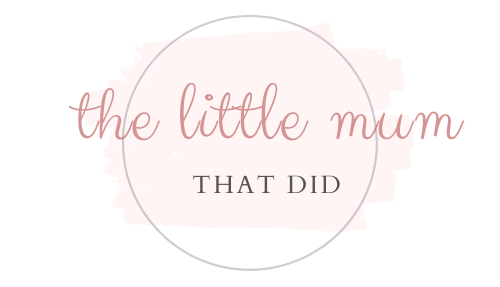One thing I have learnt to accept and understand of late in our household, is that little people have BIG emotions. One minute I can have happy, calm, kind little angels in my presence and the next, I could swear the incredible hulk just smashed his way through the lounge room leaving a path of angry destruction behind him.
I mean, who would’ve thought that asking them to put their shoes on (for probably what was the 10th time) could’ve set off such big emotions for such little people?
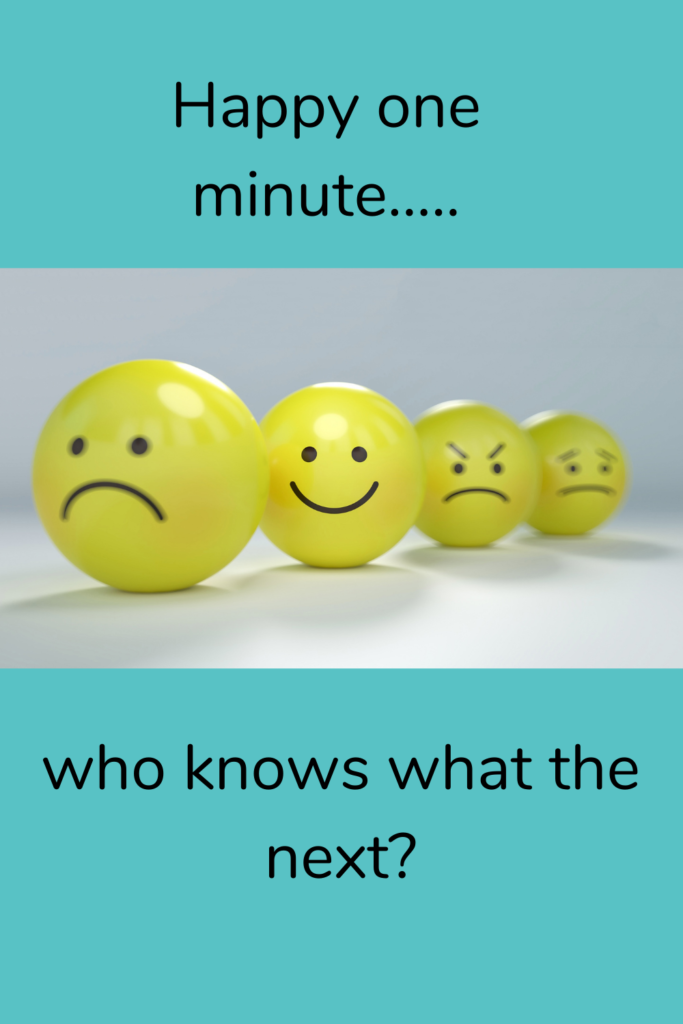
(Pour wine here).
Staying calm during challenging parenting moments like these can certainly be tough sometimes. It’s easy to get yourself caught up in your kids emotions simply because they are so BIG. But it’s important to get a grip on your own emotion response before there are any lasting effects on your little ones.
I too have had my share of times where I have felt like I was going to lose it. And, well TBH in moments of weakness and overwhelm I have lost it. One thing I realised since becoming a mum, is that I have a personality that is highly sensitive to the way others are feeling. In the past, if the incredible hulk was to suddenly smash through the living room, I found myself very susceptible to harness my own version of hulk in order to try and combat the situation.
Yep, I’ve definitely yelled and responded in anger many a time in my parenting life. Felt guilty about it. Promised myself to do better tomorrow. And then when tomorrow comes reduced myself back to those yelling and threatening ineffective discipline strategies all over again.
Eventually I worked out that I was only trying to fight fire with fire, and it was up to me to find another way if I want to raise calm, emotionally intelligent children. I realised that I needed to change the way I was responding, to my own feelings as well as theirs when they experience these BIG emotions themselves.
What we don’t always remember and understand in these moments is that we as parents are the ones who hold the power in how we do respond to our children. And therefore how they learn to respond to themselves when they are experiencing these BIG feelings. It took me a few years to work out that whatever I choose to model in front of them, they are quick to fire it right back at me. That calm breeds calm. And positivity breeds positivity.
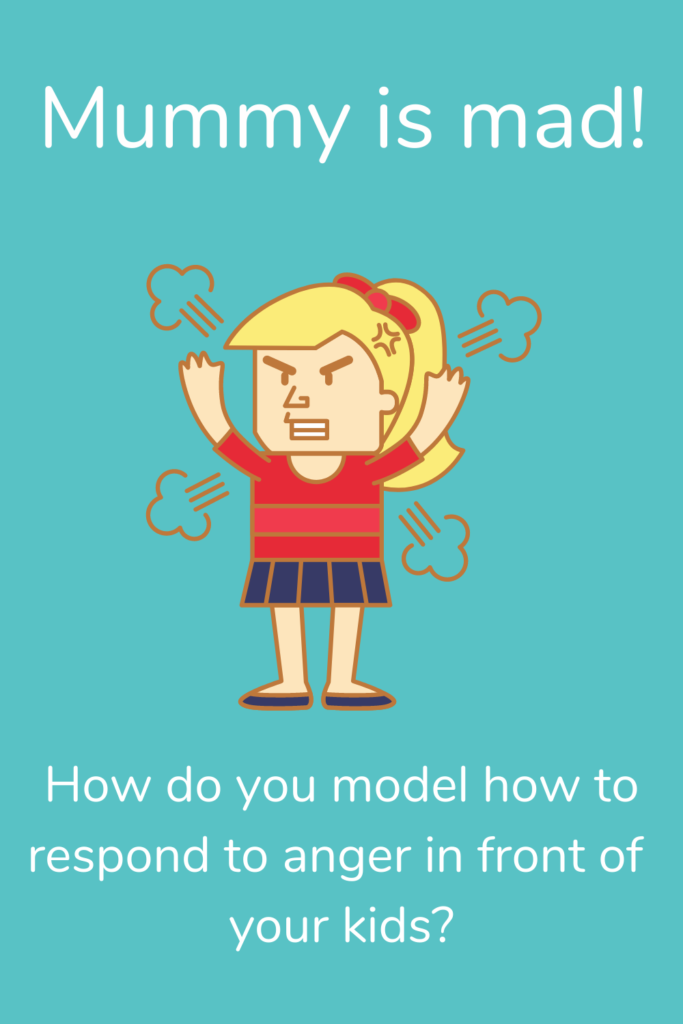
I know how easy it is to lose yourself in a moment where emotions are flying high. Learning to control our own emotions during moments of chaos is a challenge in itself let alone trying to teach your own little ones to do the same.
So here are 6 sure fire ways to keep calm and respond to challenging situations without yelling and screaming- and teach kids to do the same.
- Realise your triggers.
- Understand a child’s brain is literally incapable of reasoning.
- Model calm to promote calm.
- Describe what is happening without judgement and listen with full attention. (Instead of yelling).
- Empathise, acknowledge and validate their feelings. Master the art of modeling emotional intelligence.
- Problem solve, use imagination and roughhouse.
- Realise your triggers and be prepared.
#1 Realise your triggers and be prepared
Take notice of those past circumstances and moments that you felt defeated, yelled or had a bad day with your kids. Were you tired, rushed, parenting on your own, overwhelmed by the mess? I know all of those triggers can occur simultaneously on a regular basis in our house. Sometimes these small things can be a core problem in how you connect to your children. But the truth is that the vibration and the energy in the air of these moments that you share with your kids everyday actually starts with you. So work out what your triggers are and take steps to address and avoid them in the first place if possible. This might mean asking for support from people around you. Remember, it takes a village so never be afraid or ashamed to ask for help, especially if it’s going to help you all have a better day in the long run.
If your triggers are unavoidable, (For example, lack of sleep with your newborn), then you need to take time to prepare yourself. Learn to breathe through the things that are happening around you. A great tool to use to change your perspective of any given moment simply by practicing gratitude. And give in to knowing that being a mum is hard, there’s no doubt about it, but once you have identified what those particular triggers are for you, you can learn to either accept them, plan ways to cope with them or change them. This may mean going to bed earlier, doing less after school activities or setting up chore charts to get the kids to help you get things done so you’re not so overwhelmed. Overwhelm was one of my biggest triggers. Which was often set off by the amount of housework that needed doing. Knowing that this was one of my biggest triggers, I created a division of labour in our house so I no longer have to do it all on my own.
TIp: make up a chore chart for your husband too. Mine wanted to help me get over my overwhelm by helping me around the house but just didn’t know what he needed to do. I’m serious when I tell you that you need to spell it out for them, and make it clear but I promise you that you’ll see what a difference this will make to your life.
So start by identifying the things you can do, to help YOU be at the top of your game so you can look after your mental sanity first. How can you reduce the effect of the triggers that set you off balance and cause you to flip out in those moments that you need to keep in a calm state for your children.
#2 Understand that their little brains literally cannot handle big emotions
You know when you give your child a red cup but it’s the blue one they really wanted? And suddenly your 2 year old transforms into an uncontrollable velociraptor right in front of your eyes. Hmm, I don’t remember the lesson on how to tame dinosaurs in our prenatal classes, do you? One would have thought that they were actually going to eat the cup. It seemed that important.

Learning the science of a child’s brain was a complete game changer for me and how I learnt to respond with calm to my children. Especially when they would flip out over something as trivial as the colour of a fucking cup. A child’s brain is not developed for reasoning through such situations yet. For us, it seems crazy that something like a red cup vs a blue cup can cause such emotional distraught in our children. Learning and understanding that they are literally incapable of having complete control over their emotions and logical reasoning in these moments, was a pivotal moment in my parenting journey. Simply because I now completely understand the mechanics or lack of connections in their little brains that for them, make cognitive reasoning hard work.
So what are the facts?
By the time a child is 6, their brain will almost be the same size as an adults. However, it needs a lot of molding before it can function to the same standard. Because of brain development, self control doesn’t begin to form until the upper brain starts to develop, which is not until around the age of 7. Bare with me a little while for your own benefit I’d like to get slightly technical. The prefrontal cortex is the decision-making part of the brain, responsible for your child’s ability to plan and think about the consequences of actions, solve problems, control impulses and regulate emotions. Therefore, the connections and pathways to using this part of the brain are not all there yet in children and need to be built by the interactions with the people they have around them.
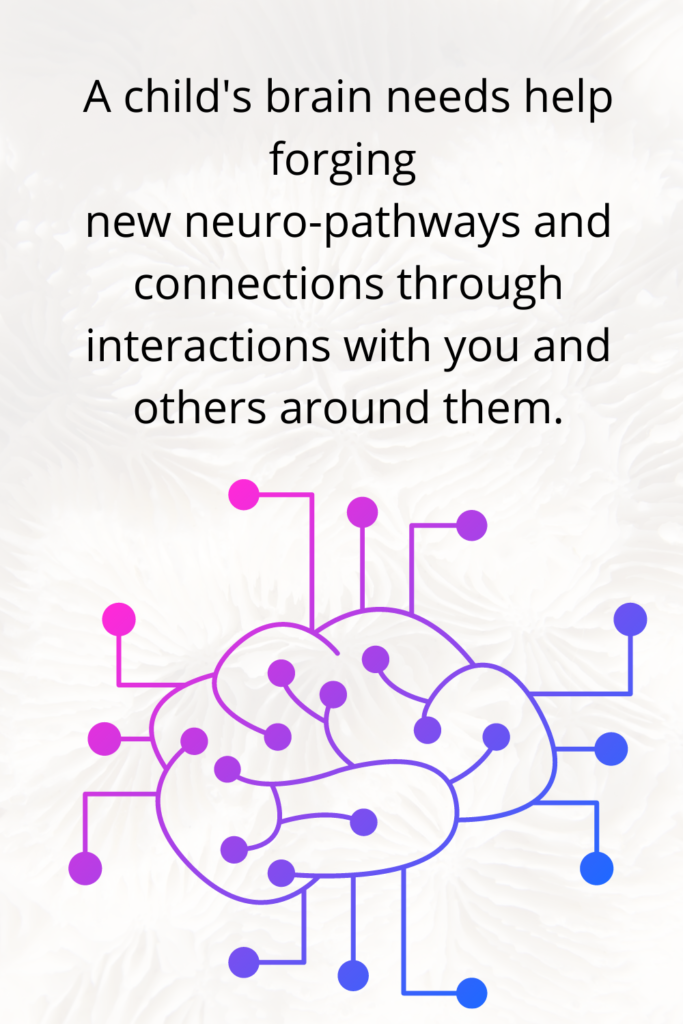
So can you guess how we learn to train our children’s prefrontal cortex? Yep, it’s all in the way YOU use that part of the brain yourself. Yep, it’s time for some self awareness. Because they learn everything they know, from YOU. What you do, what you say, and how YOU respond. Just as they’ll spit out that ‘F’ bomb pretty quickly if we use it in front of them, so too can they learn to get angry when they spill their milk, or get frustrated when they don’t get their own way.
So take note and think about how you model your own level emotional reactivity throughout the day? Thinking about your own emotional reactions in certain situations and constantly working on amending the ones that don’t serve you can make all the difference in developing this part of their brain. If you are able to attend challenging moments with calm, your children will be able to build those pathways in their brains that will allow them to be able to internalise calmness themselves in the face of big emotions that they experience in these moments too.
So understanding that it is hard for kids to think clearly or constructively when they are experiencing big emotions is super helpful when approaching challenging moments throughout the day. But how do we ensure we keep the calm when their emotional volcano erupts?
#3 Modeling calm promotes calm
The truth is you are the one who has to be the calm in the storm. This has proved particularly hard for me in times when all 3 of mine decide to have a go at the same time! But I know now that I can either choose overwhelm central station or step out for a minute, pause and take a breath. Because when we get anxious, stressed or angry our breathing becomes quicker and more shallow. Our body goes tight and tense. Suddenly our brains cant get enough oxygen, leaving us more likely to react instead of responding with thought. In moments that you can feel this tension building up inside of you, make sure you pause and take a deep breathe. Or 10 if you need it.
The trick here, is to sit with the feeling, as it is. Contain it. Feel it. And never react straight away. Witness your thoughts and feelings to accept your emotions. Then you’ll see that you are able to respond with calm and a better sense of clarity. Sometimes, in order to do this, I even step out of the room so I can recenter myself before I respond. (This simple act often signifies to my kids that mummy is now pretty pissed off and often brings them back into line without me even having to do anything). Sometimes I even model my breathing by counting down 3 large breathes out loud as I offer the opportunity for them to participate too.
The biggest trick is to detach yourself from the situation first and then re-enter into it in a state of calm. Only then will you be capable of taking action to resolve these challenging moments by using empathy and compassion. Which leads us into the all important next tip for calming you and your kids.
#4 Empathise and acknowledge their feelings. Then validate by modeling and coaching emotional intelligence
Step 1: Empathise
It’s true when they say children need love the most when they deserve it the least. Using empathy is a key tool when responding to any situation you come across with your children. When our kids experience these big emotions and end up in meltdown mode, learning to respond to them with calm, empathy and compassion can make all the difference to how they learn to respond to their own emotions. I’m from the generation of kids who grew up getting a smack and sent to my room whenever I played up. I guess this was pretty effective discipline because I would never do whatever I was doing again. But really, did I ever learn my lesson?
Instead of smacking, yelling or sending your kids to their room, take a moment to really try putting yourself in their shoes when they’re in the middle of a meltdown.
First, see if you can find a way to understand what is happening from their point of view. This is a trick I use to try to reduce the number of meltdowns we have in a day. For example, I have realised that I need to give my son plenty of warning when I am going to turn off the T.V. if he is watching his favourite show. It was only upon a conversation with another mum where she asked me how I would feel if I was in the middle of watching my own favourite show and someone was to come along and just turn it off before I got to see what happened, without any warning. And yes, I would be slightly pissed. So why shouldn’t he? The ability to understand and share their feelings is your superpower. Your willingness to listen and attitude of acceptance is what can make all the difference.
Second, don’t forget the power that lies within touch. Hugging increases levels of the “love hormone” oxytocin, which is beneficial for stress levels and calming. Get down on their level and connect with touch if you can. If they are not ready for that close connection yet, just sit close with them and let them know that you are there for them when they are ready.
Step 2: Acknowledge their feelings by describing what is happening and validate
Think about how you feel when someone tells you to calm down when you’re angry.’ That statement has certainly never been effective when my little hulks emerge as it just seems to disregard our feelings. What is more effective is to really take the time to understand what is happening, identify the emotion your child is experiencing and then validate the emotion. A good way to do this is to simply just state exactly what you see is happening. However, avoid attaching any judgement to it or siding with one child. Then seek agreement that there is a problem.
Examples of how this might sound:
- ‘I hear you. You are angry that your sister snatched the toy out of your hand.’
- ‘Oh dear, it looks like we have a problem here. You are upset. Lets see how we can solve this.’
- ‘I notice you are frustrated because you can’t tie your shoes.’
- ‘I can tell you are…(Insert emotion).’
- “It sounds like….’
- ‘Sounds to me that you are so mad that you feel like punching and knocking things over.’
- You are mad aren’t you?
- You look sad/angry.
- I hear that you feel angry at your brother.
- I see you are upset/you are anxious about
- I notice you are mad
- You feel as if no one understands you
- I can tell you are frustrated right now
Sometimes we can use the art of reflecting back to our children what we hear them say by simply repeating it back to them.
Here’s some examples.
Child: ‘Mummy joey snatched the toy from my hand.’
Mummy: ‘Joey snatched the toy out of your hand. It can be frustrating when both of you want to play with the same toy.’
Be careful not to dismiss their emotions. The denial of feelings can confuse and enrage kids. It also teaches them to not know what their feelings are and to not trust them. What they do need help with, is identifying which emotion they are currently feeling. Verbalising emotions can take the power of the emotion away and it gives validation to the child for feeling that way. Talk them through the process of identifying their emotions and teaching them how to deal with them by connecting and offering support and empathy when they need it. And let them know that no matter how strong they are feeling that it will eventually pass.
Emotional intelligence in a nutshell is really, what do I feel? What do I want? And then asking for it. But often the problem for our children is being able to process it and then verbalise it in order to work it out.
Step 3: Model and coach kids how to identify and express their needs and emotions.
Children need coaching to identify and express their needs and emotions. Getting kids to surrender to their emotions and talk themselves through it is a constant practice.
If you begin by regularly using statements like the ones suggested above, you will see that your children (just like that F bomb) will start to pick up on what you are saying when they are trapped in these moments and start to use them on their own. Sometimes this takes more coaching, so in these moments you can use questioning or mirror statements to get them to come up with it on their own.
Use examples like…..
‘Say, I don’t like it when you….’
- ‘What are you trying to tell your brother……..?’
- ‘It makes me feel….. when….’
- Can you tell your sister how you’re feeling instead of what you think she’s doing?
- Tell your brother how it makes you feel when…..
And would you know the easiest way to respond sometimes …… is with a simple empathetic …..
“Oh…..mmmmmm….or just I see,’ combined with a nod.
Seriously, I thought this would never work. But sometimes all they need is validation that someone is listening, that you heard or you saw what happened to them and they’ll often express everything after that all by themselves.
#5 Problem solve- Together
Support your children through their emotions but try not to solve their problems for them. Get them to come up with their own ideas for how they might be able to fix them. Restate your family values and talk about some solutions that might work for that particular situation. Getting them to come up with the solutions themselves gives them ownership which means they’ll be more likely to settle on one that works for them. Sometimes we write down all solutions to our problems, every idea counts and then we pick the best option that everyone can agree on.
To encourage problem solving you can ask…
- ‘What could we do about this?’
- ‘What could we say to each other to make things better?’
- What can we do to work this out so everyone is happy?’
- ‘Your sister wants you to stop. Do you need help to stop?’
- ‘How can we make you feel better?’
This sort of practice will develop skills in flexibility, tolerance, collaboration and problem solving among your children and you will find that you are needed to step in less every time there is an issue between them.
#6 Using imagination, laughter and roughhousing to cut the tension
This is my favourite way to step in when I need to. We often take ourselves too seriously, especially when we are in a rush or we are busy trying to get things done. Sometimes using a bit of laughter and fun is a great way to distract from a problem or conflict at hand. You don’t need to use every moment of tension as a learning opportunity. Sometimes all they need is a tickle, a joke or a bit of playfulness to bring them out of a negative moment. And obviously this works to keep your state of calm and happiness too. So work out ways you can turn something into a game, roughhouse with your kids or playfully distract them from the problem.
I have a mummy love gun that shoots tickles of love whenever my son gets in an angry mood. He loves tickles. I’ll simply yell, watch out, here comes a shot of mummy’s love tickles! And I bring out my hand pistol, shoot it at him and give him bullets of tickles. Works every time. For him. You just need to find out what will work for each child in those moments.
Or if the kids are fighting over a toy, I love to joke and run over and yell playfully, “No I want to play with that toy.’ And I act all silly. This not only models what they look like but they thinks it’s hilarious to see an adult acting this way.
I’ll save the best for last. My favourite of all is enticing their imagination and giving them their wishes in fantasy. Sometimes kids request things that just aren’t possible at that moment in time. These can be anything, from wanting to go to the park at bedtime to eating chocolate for breakfast. The best way to detract from their ideas in these situations is to get them to bring on their imagination of wants.
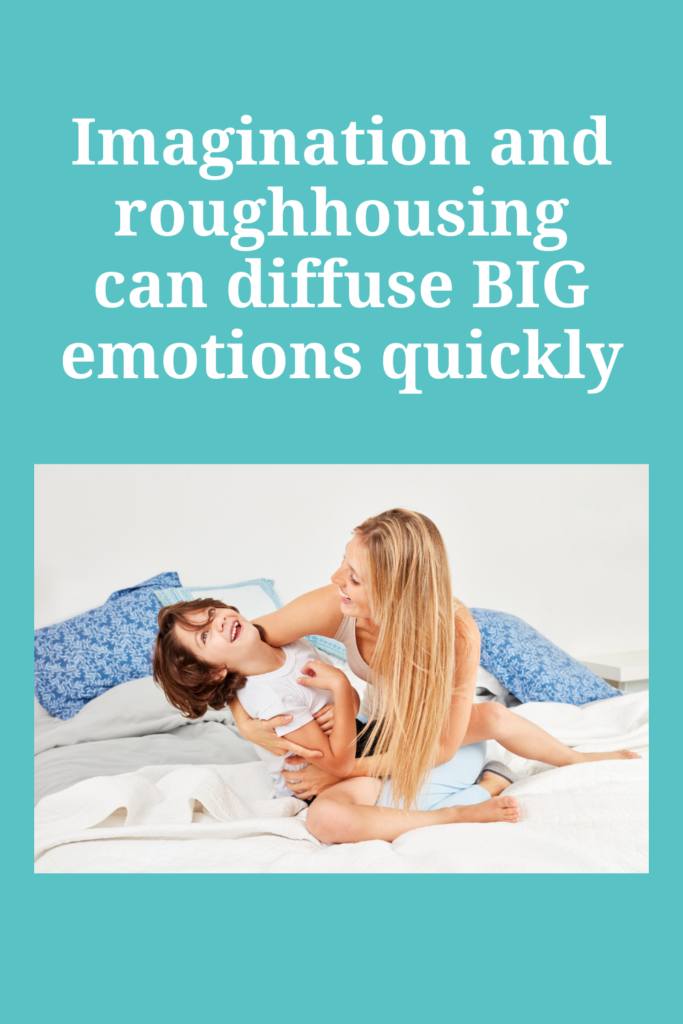
For example.
Kid: I want to eat chocolate for breakfast and nothing else.
Mum: Ooh yum, you want to eat chocolate for breakfast. That sounds amazing. (As you pour them a bowl of cereal). Can you imagine eating chocolate for breakfast, lunch and dinner? Or what if this whole house was made of chocolate and you could just eat the couch if you felt like it?
Just try it. You’ll see their imaginations running wild, (as they eat their bowl of cereal). They start living their ‘wants’ in their imaginations and it works in a way to distract them from their initial desire. I mean really, who doesn’t enjoy imagining a house of chocolate.
So when is it ok to yell at your kids?
I honestly think it is seriously unrealistic to expect to never yell at your kids, no matter what type of parent you are. And sometimes it’s certainly necessary, like when your kids are in danger or there is a real emergency at hand. So the real truth here is that when you are going to yell at your kids to stop them from running out in front of that truck you want that to be effective because they are not used to hearing you yell at them. So would YOUR kids listen or would they ignore you because you yell so often?
And last but not least, please give yourself a break. None of us are perfect, and I can guarantee you that no parent out there has it all figured out. This is still a huge work in progress for both myself and my family. By learning to handle my own emotions, my kids are learning to do the same and I have less tendency to yell and more ability to discipline more effectively when challenges arise. And TBH, sometimes I still slip. I’m only human and sometimes when all my triggers perfectly align I have the tendency to relapse into my old ways. But I see great opportunity in learning from these moments and never forget to apologise when I need to, forgive myself and move on. It’s all just practice. Practice. Practice. And progress. You’ll all be happier for it. And so will your kids.
